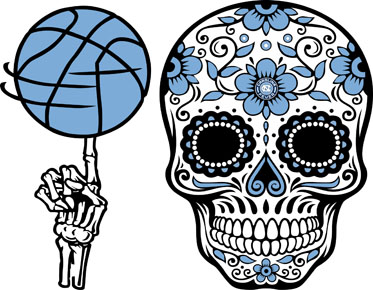Dimensional Delights: Exploring the World of 3D Vector Art Conversion
In the dynamic realm of digital design, the quest for depth and dimensionality is a constant. As the demand for visually striking and immersive graphics continues to rise, the process of converting 2D vector art into a three-dimensional masterpiece has become a game-changer. In this comprehensive guide, we'll delve into the fascinating world of 3D vector art conversion, exploring techniques, tools, and the creative possibilities that come with adding a third dimension to your designs.
1. Understanding the Essence of
3D Vector Art
Traditional
vs. 3D Vector Art:
● Depth Perception: 3D vector art introduces depth, making elements appear as if they
occupy space.
● Visual Realism: Mimics the way objects interact with light, shadows, and perspectives
in the real world.
Creative
Versatility:
● Enhanced Realism: Adds a sense of realism and tangibility to digital designs.
● Artistic Expression: Allows for innovative and visually impactful artistic expression.
2. Essential Tools for 3D Vector
Art Conversion
Adobe
Illustrator:
● Extrude & Bevel Tools: Illustrator's Extrude & Bevel tools enable the creation of 3D
shapes from 2D vector objects.
● Shading Options: Customize shading, lighting, and material properties for a realistic
appearance.
Blender:
● Open-Source Powerhouse: Blender is a versatile open-source software with robust 3D modeling
and rendering capabilities.
● Mesh Editing: Allows detailed manipulation of 3D meshes for intricate designs.
Cinema
4D:
● User-Friendly Interface: Cinema 4D is known for its intuitive interface, making it accessible
for designers with varying skill levels.
● Advanced Animation: Ideal for adding motion and dynamism to 3D vector art.
3. Basic Principles of 3D Vector
Art Conversion
Extrusion:
● Creating Depth: Extrude 2D shapes to add depth and volume.
● Adjustable Parameters: Control the depth, bevel, and angle of extruded elements.
Lighting
and Shadows:
● Realistic Illumination: Simulate realistic lighting to enhance the three-dimensional effect.
● Casting Shadows: Shadows add depth and emphasize the spatial relationships between
objects.
Perspective
and Depth of Field:
● Vanishing Points: Introduce perspective by aligning elements with vanishing points.
● Depth of Field Effects: Blur distant elements for a realistic focus effect.
4. Step-by-Step 3D Vector Art Conversion
Process
Step
1: Prepare Your 2D Vector Art:
● Clean and Simplify: Ensure your 2D vector art is clean and
simplified for a smoother conversion process.
● Group Elements: Group related elements to maintain organization during the conversion.
Step
2: Import into 3D Software:
● Choose Your Platform: Import your 2D vector file into a 3D
modeling software like Blender or Cinema 4D.
● Maintain Layers: Retain layer structure for easier manipulation.
Step
3: Extrude and Shape:
● Apply Extrusion: Use the extrusion tools to add depth to your 2D shapes.
● Adjust Parameters: Fine-tune extrusion settings for the desired 3D effect.
Step
4: Lighting and Material Mapping:
● Set Up Lighting: Experiment with different lighting setups to find the most visually
appealing result.
● Apply Materials: Assign materials to your 3D objects for realistic textures and
reflections.
Step
5: Fine-Tune Details:
● Refine Mesh: Modify the 3D mesh to refine details and ensure a polished look.
● Add Texture Details: Enhance realism by incorporating texture details where necessary.
Step
6: Animation (Optional):
● Animate Elements: If using software like Cinema 4D, explore animation options to bring
your 3D vector art to life.
● Consider Dynamics: Experiment with dynamic simulations for added realism.
5. Challenges and Solutions in 3D
Vector Art Conversion
File
Size and Complexity:
● Optimization Techniques: Large files can be optimized through techniques like mesh
simplification.
● Consider LODs: Implementing different levels of detail (LODs) can manage complexity.
Learning
Curve:
● Gradual Learning: Embrace a learning curve by starting with basic 3D conversion and
gradually exploring advanced features.
● Online Resources: Utilize tutorials and online communities for guidance and support.
6. Creative Applications of 3D
Vector Art
Brand
Logos and Identities:
● Dynamic Logos: Transform static logos into dynamic, 3D representations for brand
identity.
● Animated Intros: Create captivating animated intros for brands and businesses.
Product
Visualization:
● Mockup Realism: Present product designs in a realistic 3D environment for client
presentations.
● 360-Degree Views: Enable viewers to explore products from every angle.
Digital
Art and Illustrations:
● Immersive Artwork: Elevate digital illustrations by adding depth and interactive elements.
● Unique Visual Styles: Experiment with unconventional visual styles that challenge traditional 2D boundaries.
Conclusion
As we venture into
the exciting realm of 3D vector art conversion, the creative landscape expands,
offering endless possibilities for designers and artists. Whether you're
transforming brand identities, visualizing products, or pushing the boundaries
of digital art, the addition of that third dimension brings a new level of
depth and engagement. Embrace the tools, master the techniques, and let your
imagination soar as you breathe life into your 2D creations, transforming them
into immersive, dynamic masterpieces that captivate and inspire. The journey
into 3D vector art conversion is not just about adding depth—it's about
unlocking a new dimension of creative expression.


